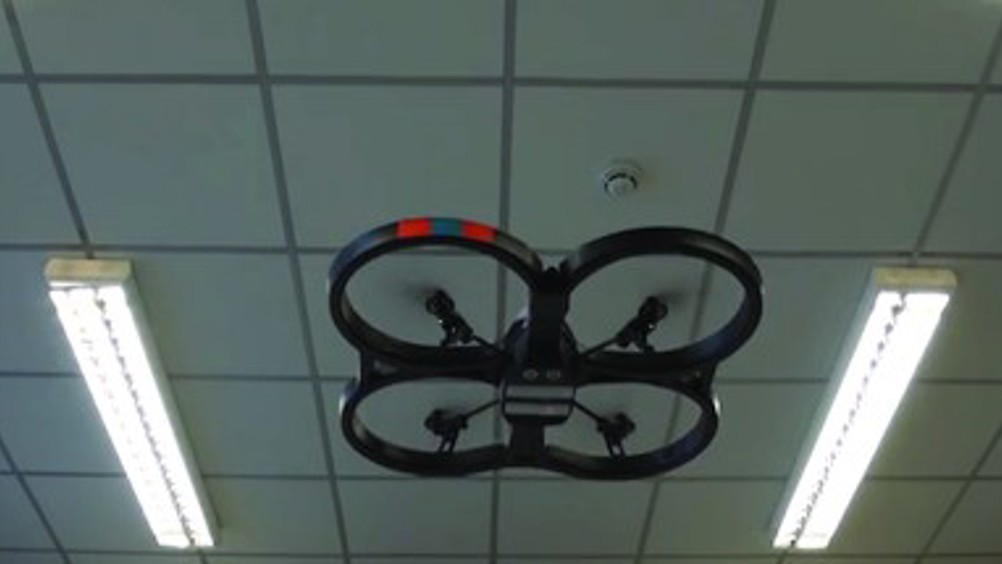Reconfiguring robots learn to look after themselves
Autonomous robots will conduct missions too hazardous for humans and reconfigure themselves if faults occur with their onboard systems.

This is the aim of engineers at Sheffield University’s department of Automatic Control and Systems Engineering (ACSE) who envision robots working together in hostile environments.
To achieve this robotic systems will need in-built architecture that helps them make sense of their surroundings and prevent them from colliding.
To this end, the team has developed software that enables Quadacopters to learn about their surroundings using a forward facing camera, and have also demonstrated mid-air collision avoidance through the use of game theory.
To make sense of its environment, the robot starts with no information about its environment and the objects within it. According to the University, by overlaying different frames from the camera and selecting key reference points within the scene, it builds up a 3D map of its surroundings.
Other sensors pick up barometric and ultrasonic data, which give the robot additional clues about its environment. This information is then fed into autopilot software to allow the robot to navigate safely, but also to learn about the objects nearby and navigate to specific items.
Register now to continue reading
Thanks for visiting The Engineer. You’ve now reached your monthly limit of news stories. Register for free to unlock unlimited access to all of our news coverage, as well as premium content including opinion, in-depth features and special reports.
Benefits of registering
-
In-depth insights and coverage of key emerging trends
-
Unrestricted access to special reports throughout the year
-
Daily technology news delivered straight to your inbox










Water Sector Talent Exodus Could Cripple The Sector
Well let´s do a little experiment. My last (10.4.25) half-yearly water/waste water bill from Severn Trent was £98.29. How much does not-for-profit Dŵr...